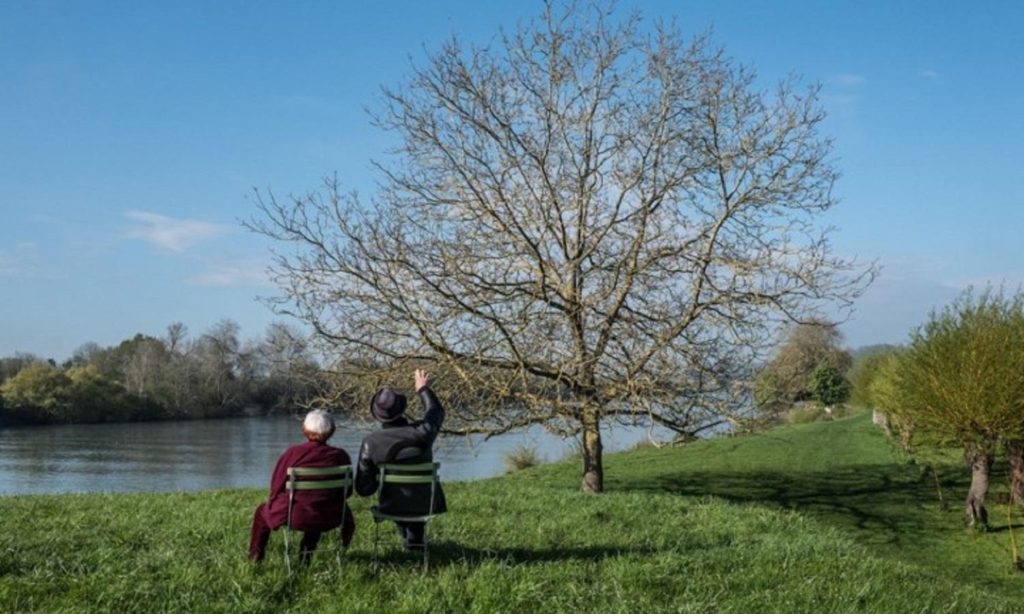
‘New organs of perception come into being as a result of necessity.’ This observation comes to us from Rumi, that beloved Persian poet, in his three-volume work of poetry called The Masnavi. His wisdom is evident in the direction he then gives us: ‘Therefore, O man, increase your necessity, so that you may Increase your perception.’ It’s easy to imagine that the great Agnes Varda had this in mind while she crafted Faces Places (Visages Villages)—her playful, penultimate film. As she and her young friend, the gregarious and enthusiastic artist J.R., charge along the freeways and side roads of France, they seem eager to discover and celebrate people that the spotlight has overlooked, those described by Peter Falk in Wings of Desire as ‘extra people.’ When they find — when they love — these unglamorous but extraordinary humans, they celebrate them by printing their portraits at a colossal scale.
What does this have to do with aging? As Varda’s capacities for human connection — clarity of sight, precision of memory, strength — subside, she seems more motivated than ever to celebrate the wonder of what it is to be human, and to correct the injustices of the distorted scales that lift up some and neglect others. As she goes, she is burdened by physical limitations, and it eventually becomes clear that she is also increasingly furious as the cruelty of time in separating her from others she has loved. The culmination of their journey is unexpected — an anxious appeal for a particular reunion, and a fury when it fails — but it represents an increasing clarity of understanding: that meaningful relationships are measured by faithfulness, not fame; by presence, not nostalgia; by in-person investment, not convenience. ‘I don’t see you very well,’ she tells J.R., and the image she gives us approximates the miasma of his presence beside her. ‘But,’ she adds, ‘I see you.’ And in this, we have our thesis: Even as the body breaks down, the heart can increase its capacity for vision. And it’s hard to deny her life as a treasure hunter of beauty led her to a sweetness of understanding; it seems inscribed like calligraphy within her exquisite features. Looking like the a good-witch grandmother from a Miyazaki fantasy, her face is luminous with wisdom, the extravagance of her imagination heightened by the increasing necessity of her last days. — Jeffrey Overstreet
- Directed by: Agnès Varda JR
- Produced by:
- Written by: JR Agnès Varda
- Music by: Matthieu Chedid
- Cinematography by:
- Editing by:
- Release Date: 2017
- Running Time: 94
- Language: French
Arts & Faith Lists:
2019 Top 25 Films on Growing Older — #14